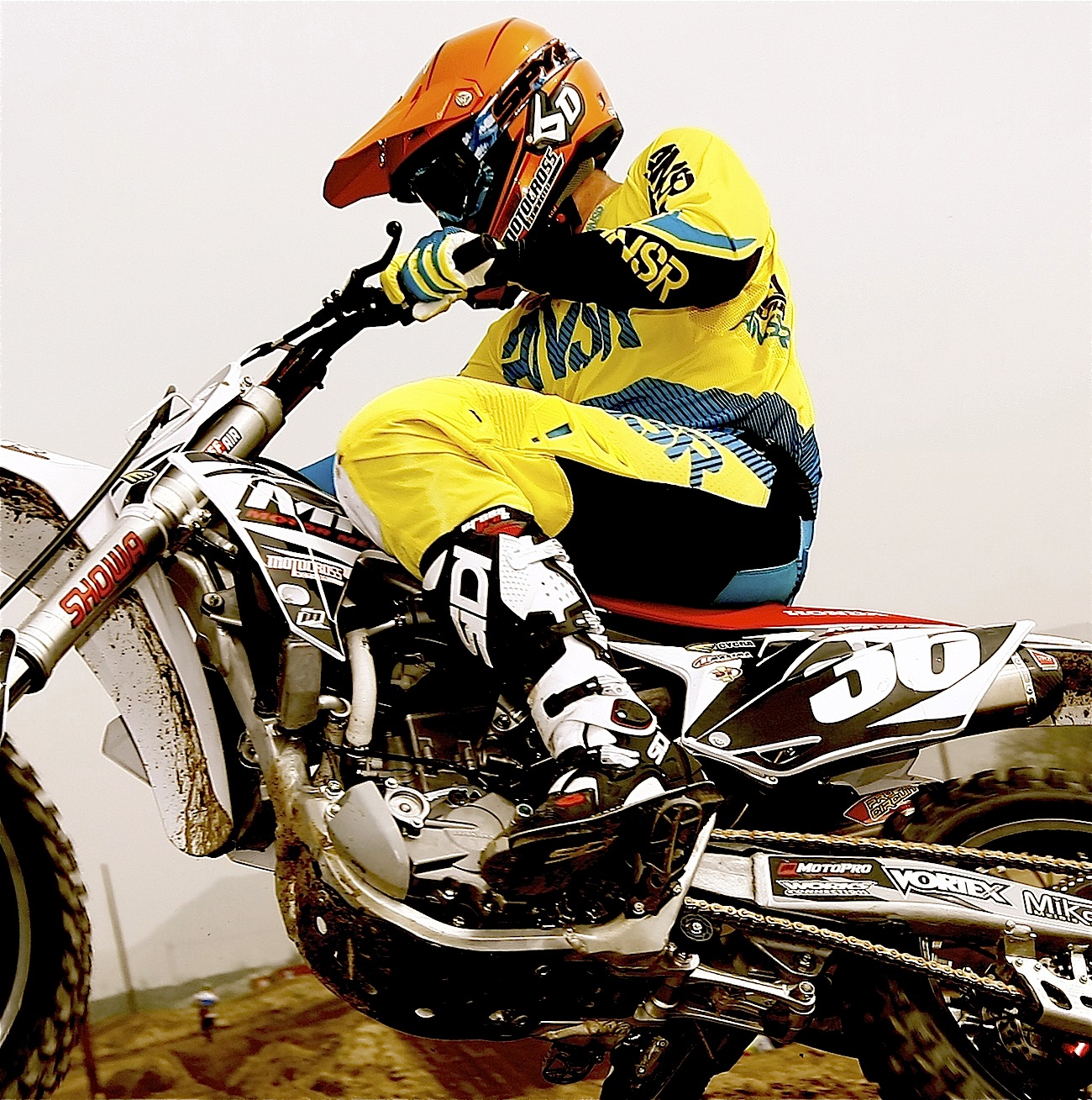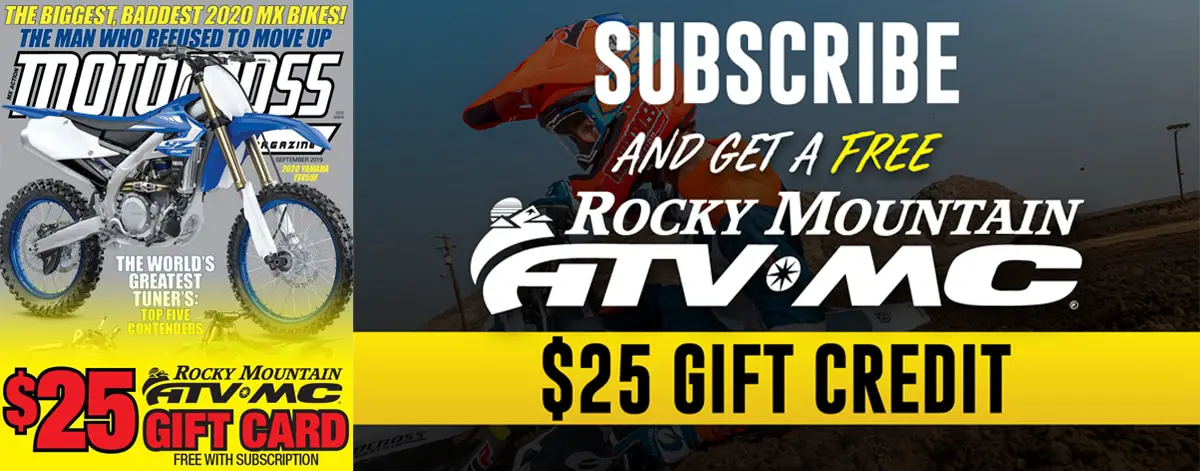TEN THINGS YOU NEED TO KNOW ABOUT SHIFTING
(1) One down, four up. Okay, maybe it is one down, five up for you, but, either way, if you’re a motohead, you know that first gear is for cruising the pits or climbing the Widow Maker, which means that for anything track-related, you have one less gear than the spec sheet claims.
(2) The meat. In order to get the most bang for the buck out of your bike’s powerplant, you need to identify where the meat of the powerband is. Where exactly is the meat? Each bike is different. A KTM 250SXF has to be held wide open until your eyes start to bleed. Then, and only then, will you find the meat you’re looking for. On a Suzuki RM-Z50F, the meat is from low to mid. If you rev a RM-Z450 past 8500 rpm, it will slow down as the rpm climb. Lesson here: shift in the meat of the powerband, not before or after.
(3) Loading up. Four-stroke owners, listen up. Engine braking, often called decompression braking, has both positive and negative effects. The big negative of four-stroke decompression braking is that the shock loads up on deceleration. A good example of this is when coming down a rough downhill. The earlier you shift down, the more the rear will start kicking and doing weird things. Decompression braking makes the rear shock get stiffer. Many riders think this feeling is caused by a suspension tuning issue, but the easier fix is to avoid downshifting until the last second and then use the engine in conjunction with the brakes. If you combine decompression braking and real brakes, you can go in deeper than you would imagine.
(4) Stay planted. Many riders downshift by lifting their left foot off the footpeg. Don’t do it. This sudden weight shift from one peg to the other leaves you susceptible to the bike getting away from you if you hit an unexpected bump or rock. Keep both feet planted on the bike, and instead of pounding down on the shifter like it’s a cockroach, simply slide your foot forward and pivot your ankle joint to snap off drama-free downhshifts.
(5) Leg out. Have you ever watched where your knee goes when you upshift? Many riders swing their knees away from the bike to allow the inside of their boots to get under the shift lever. Practice upshifting while keeping your knee close to the tank and aimed straight ahead. This not only takes less energy but helps keep the bike balanced under the hard acceleration soon to come. When a rider upshifts while seated, the correct technique is to pull up with the leg and use the ankle joint to make the shift. This will keep the leg tight against the bike.
(6) Captain clutch. Are you a clutch abuser? Do you use the clutch multiple times to get the bike in its powerband out of a corner? Not only is this hard on the engine and clutch, it will also lighten your pocket book. Replacing burnt clutch plates and chewed-up baskets is not cheap. Try just shifting without using the clutch.In fact KTM four-stroke now come with a Quick Shift option. All you have to do is press the QS button on the left-side multi-switch. When the bike is in Quick Shift you can shift without the cluthc, without breathing the engine or without worry. Quick Shift kills th spark when a sensor eon th shift drum indicates that a shift has started. By killing the spark, the engine sops of a milli-second to take the load off of the transmission. Quick Shift is awesome on long fast starts where you are shifting through every gear.
(7) Don’t be lazy. Many riders are just lazy and try to get away with not upshifting if they are getting close to a corner. They just rev the engine and maybe even breathe it a little to avoid shifting up; however, it should be noted that a bike at half throttle in fourth is faster than a bike at full throttle in third. Thus, that last upshift can make you a tenth of a second faster—and tenths are hard to find. Conversely, lots of riders try to stay seated as they enter a turn, and because they are seated, they try to get away with not downshifting. The key to entering corners is to stand up, downshift at the proper moment, and resist sitting until you are at the apex.
(8) On the edge. When a rider feels as though he is riding on the edge, he doesn’t push the envelope any further. So, he doesn’t shift up, but instead stays in the same gear. Why? Because he is afraid that if he goes any faster, he will get himself in trouble; however, shifting to the next gear can make the ragged edge move further away. A taller gear will make the bike feel smoother. It will allow the rear suspension to work with less chain torque on it. The weight will transfer to the rear, making the front feel lighter, and the engine will have more of a roller-coaster feel. You don’t have to go faster when you shift up. You can go the same speed but feel more comfortable.
(9) Free-wheeling. If you have a tendency to pull in the clutch when coming into a corner, stop. It is a bad habit. Our guess is you are doing this because too much engine braking makes the rear end load up. To fix this, just shift up. A higher gear will take some of the engine braking away. Just make sure to make the downshift just before the corner (preferably while standing up).
(10) Half pull. Some bikes will shift under a load (KTM) without the clutch and others will not (Yamaha). Whichever bike you own, a fast and easy way to shift under a load is to quickly snap the clutch no more than halfway (only one finger is needed) when making a shift. No need to pull it all the way in, just far enough to engage the clutch.







Comments are closed.